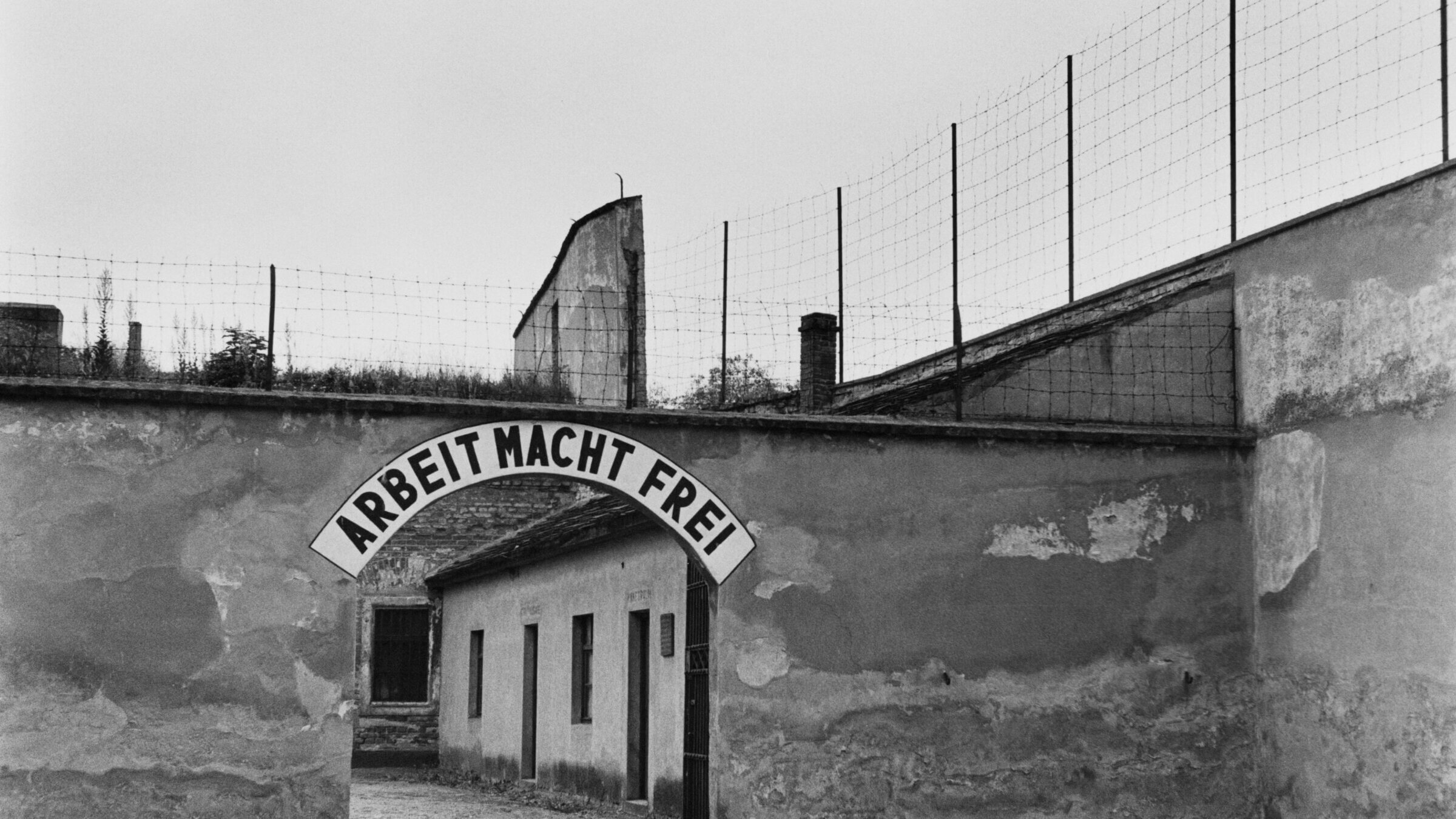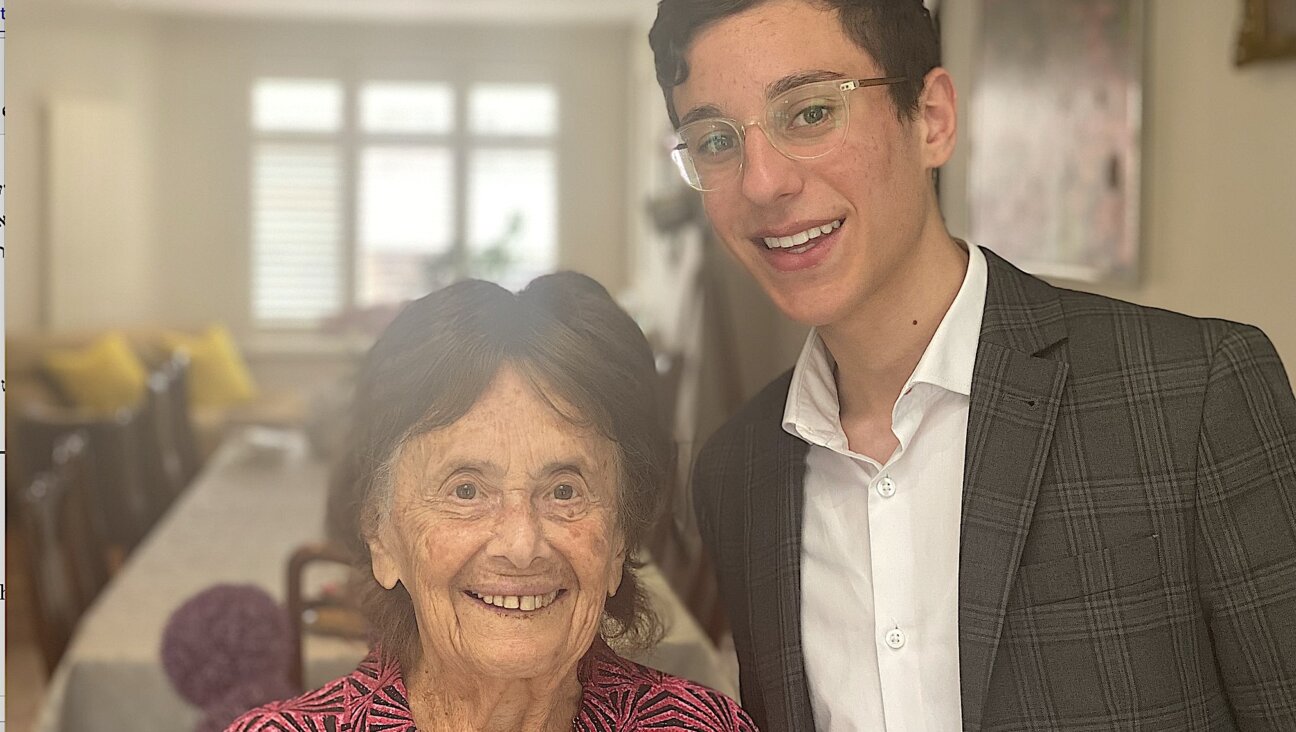What we keep getting wrong about the Holocaust
In his ‘Unfinished History,’ Dan Stone argues that it was not an exclusively German project, but a ‘continent-wide crime’

The slogan “Arbeit Macht Frei” is seen over the gateway to the Nazi concentration camp of Theresienstadt. Photo by Getty Images
The Holocaust: An Unfinished History
By Dan Stone
Mariner Books, 464 pages, $32.50
The biggest takeaway from Dan Stone’s breathless, information-packed Holocaust history is that the subject is even messier and more complicated than we’ve come to believe.
Stone, professor of modern history and director of the Holocaust Research Institute at the University of London, concedes that the literature of the Holocaust is so vast and variegated that no one person could possibly master it all. Yet he also suggests that significant aspects of the destruction of European Jewry have been neglected or misunderstood, problems he aims to address in The Holocaust: An Unfinished History.
Stone views the mass murder of Jews as a “continent-wide crime” whose traumatic ramifications still shape contemporary politics. He argues that it is a misconception to think of the genocide as an exclusively German project, even if the German role was indispensable. The link he discerns between Nazi ideology and today’s radical right-wing movements is one reason he considers Holocaust history to be “unfinished.”
Stone’s attempt to synthesize so much material, while filling in purported gaps in the record, constitutes a dauntingly ambitious project. In its pursuit, Stone understates the extent to which old Holocaust shibboleths, such as its conception as primarily industrialized murder, already have been undermined or dismantled by other scholars.
Especially since the post-Cold War opening of East European archives, the so-called Holocaust by bullets has received considerable attention. Timothy Snyder’s 2010 book, Bloodlands: Europe Between Hitler and Stalin, is just one example; the work of the historian of genocide Omer Bartov, whom Stone cites, is another. Nor will the notion of the Jewish ghettos of Eastern Europe as “death traps” surprise anyone who’s read the first-person testimony of those who lived and died there.
Some of Stone’s themes echo those in Final Solution: The Fate of the Jews 1933-49, the masterful 2016 account by another British historian, the late David Cesarani. Cesarani described his aim as bridging the gap between popular conceptions and scholarly knowledge of the Holocaust. Like Stone, he stressed the role of non-German collaborators. He also highlighted the prevalence of gender-based violence and the importance of economic motives in fostering genocide — and what he saw as the inefficiency and improvisational quality of the Nazi killing machine.
In contrast to Cesarani’s “functionalist” approach, Stone emerges as a moderate, if not full-throated, “intentionalist,” attributing the execution of the Holocaust to “ideology tempered by contingency.” Sometimes he labors to make distinctions, writing, for example, that “the unfolding of the Holocaust was shaped, but not determined, by war.”
The so-called Final Solution emerged from “a series of steps, not a single decision,” Stone writes. But antisemitic fervor, he suggests, was at its core: “Although there was no plan to murder the Jews of Europe before the Second World War, what became the Holocaust started as a genocidal fantasy long before the killing began.”
Probably Stone’s greatest contribution is his insistence on the Holocaust as a fully European — and even North African — crime that was perpetrated by a variety of regimes and individuals for diverse motives (“venality, opportunism, fitting in, obedience, hatred”), often with considerable enthusiasm.
Here is how he sums up the argument, in a characteristically packed sentence: “The ubiquity of collaboration across Europe, driven by a coincidence of wants between the Nazis’ ideologically driven aspiration to rid the world of Jews and the desire of many nation-states’ leaders to create ethnically homogeneous populations, means we need to stop thinking of the Holocaust as solely a German project.” Even so, he is careful to add, it was “driven and largely perpetrated by Germans (including Austrians).”
From this perspective, he writes, “rather than a tale of German occupation, deportation and murder in death camps, the Holocaust looks more like a series of interlocking local genocides carried out under the auspices of a grand project.” He notes the complicated reversals of policies involving Jews by regimes in Romania, Hungary, Vichy France and elsewhere. And he calls the underwhelming response by the Allies “an echo of interwar appeasement.”
The most arcane section of the book deals with the roots of Nazi ideology, which he insists deserves more scrutiny. He notes Nazism’s links to “not just racial science,” itself a constantly morphing as well as suspect discipline, “but the mysticism of race.”
To Stone, Nazism is a point on an ideological spectrum, “the most extreme manifestation of sentiments that were quite common, and for which Hitler acted as a kind of rainmaker or shaman.” For the Nazis, he says, “Jews functioned as symbols of modernity that fascism was designed to overcome: rootlessness, cosmopolitanism, universality, loss of community, rapid change, standardization, soullessness.” He adds this quasi-poetic formulation: “Nazism was a paranoid conspiracy theory which believed in history as a redemption story.”
Drawing on select first-person accounts, Stone moves quickly from what he calls the economic elimination of Jews in Germany, a process that implicated much of the German population, to the rising tide of antisemitic violence. He suggests that the unpopularity of Hitler’s program of euthanasia, which targeted the disabled, is “one reason why no written order from Hitler for the genocide of the Jews has ever been found.”
Contrary to one conventional idea, he argues that the transportation and other requirements of the genocide “had no impact on the Germans’ ability to wage war.” He highlights the increasing use of Jewish slave labor, which both cost and saved lives, as hostilities sputtered to an end. And he is unable to solve the mystery of the death marches, which herded Jews from one concentration camp to another. “If insanity is generally not a useful analytical term for trying to explain Nazi Germany,” he writes, “with respect to the death marches it seems hard to avoid.”
Holocaust memorialization is, of course, a profound subject in its own right. In a brief overview of this “febrile, contested phenomenon,” Stone mentions the resistance of the Polish government to accepting Polish complicity, as well as “a certain German smugness in its own soul-searching.” Above all, he rejects the idea that Holocaust memory can serve as an antidote to future genocides.
“The Holocaust is not a lesson about the dangers of bullying, nor even a tale of the dangers of hatred,” he writes. “It is a warning that states, when elites become desperate to hold on to power, can do terrible, traumatic things.” He adds, even more pessimistically, “the Holocaust teaches us nothing, since nothing in the end can stop people supporting these dark forces in times of crisis.”



















